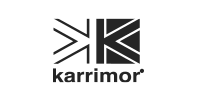< Back to article hub
Outdoors Jargon Buster
20/09/2016
For those of us who love to explore the outdoors, we know the importance of choosing the right gear. But with so many different technologies, each with their own jargon terms flooding the market, it's often difficult to know what to look for in your next purchase. Thankfully the MandM blog is here to make things a little easier for you. Read on and educate yourself on everything you need to know for your next outdoor purchase!
If you're not up on your outdoor tech, the word 'membrane' may lose you instantly, but it's not as scientific as you might imagine. The term 'waterproof membrane' simply refers to the base layer in a practise that involves bonding different types of materials together. This simply creates a texture that keeps you warmer and drier for longer. Here are some Waterproof membranes present in products from MandM...

Gore-Tex is probably the most well-known technology brand in outdoor clothing and its patented technology can be found in several products here at MandM. The base membrane with tiny holes in it is bonded to a unique Gore-Tex high performance lining which creates the "Gore-Tex laminate". This technology is applied to loads of products from top brands including Berghaus and Timberland. Check out some of these items below.

AQ2 is Berghaus' own technology and is similar to Gore-Tex - it's waterproof, breathable and lightweight. Designed for use in the great British outdoors, the AQ technology is tried and tested to allow sweat to escape whilst keeping out rain. To make sure it's waterproofed, AQ2 uses a "hydrostatic head of 10,000mm H20 column" - which really just means you stay dry and comfortable in even the harshest weather.

HyVent technology uses a polyurethane (PU) coating - this means the material is waterproofed before it's made into a jacket so that every inch will keep you dry. Similarly to Gore-Tex and AQ, Hyvent is a combination of high-performance materials that together make sure that any sweat can escape but you still stay protected from the rain.
Insulation
This tech is fairly straightforward. As the name suggests, it refers to the process of lining the inside of your jacket with down or synthetic materials for extra warmth. Read on to find out the differences between Down and Synthetic insulation....
Down - Made from duck or goose feathers, down is a great natural insulator. It is seen as the best insulator in the game, remaining lightweight and compressible. If you're after pure warmth then down is the way to go, however it is not great at repelling moisture and is slow to dry, meaning it can be less than ideal in wet conditions.
Synthetic - Synthetic insulation is designed to replicate the benefits of down, without losing heat when wet. Synthetic insulation is created with polyester fibres that are arranged in different sized threads and intertwined, mimicking the structure of down. Synthetic insulation does dry much quicker than down, however it is universally agreed that it is not quite as warm.
Waterproof Uppers
For any budding adventurer, great footwear is just as important as outerwear. Technologies that use the waterproof upper include Weathertite and AQ. Similar to the apparel detailed above, most walking boots use waterproof membranes to keep your feet warm and dry. To become waterproof (not just water resistant) you need a membrane layer in-between the inner and outer materials- a membrane that let's out air and moisture so you don’t over heat, but doesn't let water in. The number of layers used usually depends on how extreme the circumstances the shoes are designed for. 1 layer is a solid base level of protection, 2 layers are perfect for outdoor pursuits and 3 layers are for extreme conditions. We've selected some of our best hiking and walking shoes below, that all have great waterproofing - what's more, you could save a whole lot off these big brand names when you shop at MandM!
Sole Units
The sole of the shoe is comprised of two parts - the midsole and outsole. The midsole is designed with comfort in mind, whereas the outsole is made to be durable and sturdy to create a good grip. There are several different technologies at work to ensure these two units are performing to the highest degree. You can read about them below...
Midsole - The midsole is constructed of either, PU or Phylon. . PU stands for Polyurethane which is a foam often in midsoles that is said to have a higher durability and ageing resistance. Phylone is a spongy material used in midsoles and is considered the first material of its type, used by big brands including Nike.
Outsole - Vibram is possibly the most famous outsole technology, as one of the first rubber soles designed to give a high degree of grip and scuff resistance. These properties are also used in Karrimor's Dynagrip.









